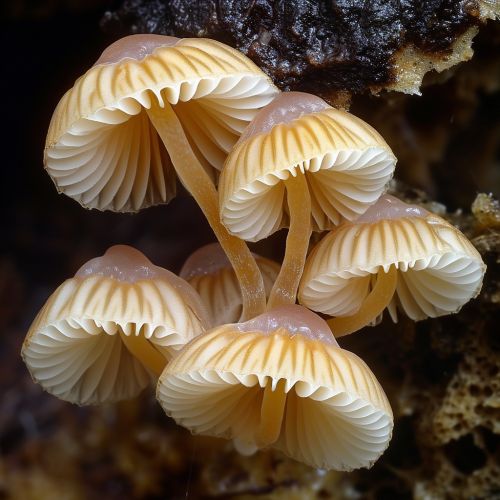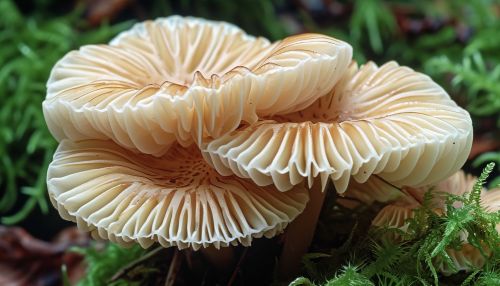Agaricomycetes Discussion
Classification and Description
Agaricomycetes is a class of fungi in the phylum Basidiomycota. The class includes the "true" mushrooms and other gilled fungi, as well as most polypores, many corticioid fungi, and many gasteroid fungi.


Agaricomycetes are characterized by the presence of a basidiocarp, or fruiting body, which bears spore-producing structures known as basidia. The basidia are typically four-spored but can be two-spored in some species. The spores are usually forcibly discharged and are often pigmented and have a double wall.
Morphology and Structure
The morphology of Agaricomycetes is highly diverse, ranging from small crust-like forms to large, complex structures. The fruiting bodies can be annual or perennial, and can take on a variety of forms, including brackets, crusts, puffballs, and mushrooms. The fruiting bodies of many species are often brightly colored, making them easily noticeable in their natural habitats.
The structure of the fruiting body can be divided into several parts: the pileus (cap), the stipe (stem), and the hymenium (spore-bearing surface). The pileus is typically umbrella-shaped, although it can take on a variety of forms depending on the species. The stipe serves as a support for the pileus and can be central or lateral. The hymenium is where the basidia are located and is typically found on the underside of the pileus.
Ecology and Distribution
Agaricomycetes are found in a wide range of habitats worldwide, including forests, grasslands, and deserts. They play a crucial role in ecosystems as decomposers, breaking down organic matter and returning nutrients to the soil. Some species form mutualistic relationships with plants, known as mycorrhizal associations, in which the fungi exchange nutrients with the plant roots.
Many Agaricomycetes species are saprophytic, meaning they obtain nutrients from dead organic matter. Others are parasitic, causing diseases in plants and sometimes even other fungi. A few species are known to be bioluminescent, producing light through a chemical reaction.
Economic and Cultural Significance
Several species of Agaricomycetes are of economic importance. Some are cultivated for food, such as the button mushroom (Agaricus bisporus), shiitake (Lentinula edodes), and oyster mushroom (Pleurotus ostreatus). Others are harvested from the wild for culinary use, including the porcini (Boletus edulis) and chanterelle (Cantharellus cibarius).
In addition to their culinary uses, some Agaricomycetes species have medicinal properties. For example, the reishi mushroom (Ganoderma lucidum) has been used in traditional Chinese medicine for centuries. Some species are also used in bioremediation, the process of using organisms to clean up environmental pollutants.
Agaricomycetes also have cultural significance in many societies. They have been featured in folklore and mythology, and have been used in religious rituals in some cultures.
Taxonomy and Evolution
The taxonomy of Agaricomycetes has undergone significant changes over the years as a result of advances in molecular techniques. The class currently includes over 20,000 species, divided into several orders. The largest of these are the Agaricales, which includes the true mushrooms, and the Polyporales, which includes many of the polypores and bracket fungi.
The evolution of Agaricomycetes is a topic of ongoing research. Molecular studies suggest that the group originated in the Mesozoic era, between 251 and 65.5 million years ago. The development of the basidiocarp is thought to have been a key factor in the success and diversification of the group.
